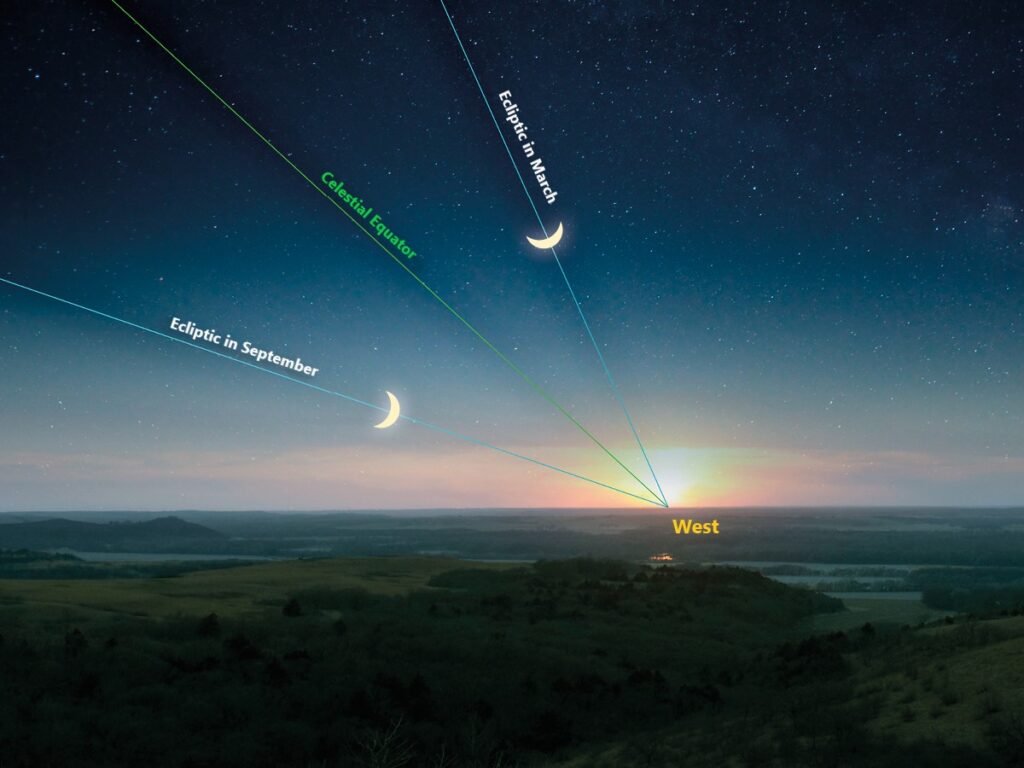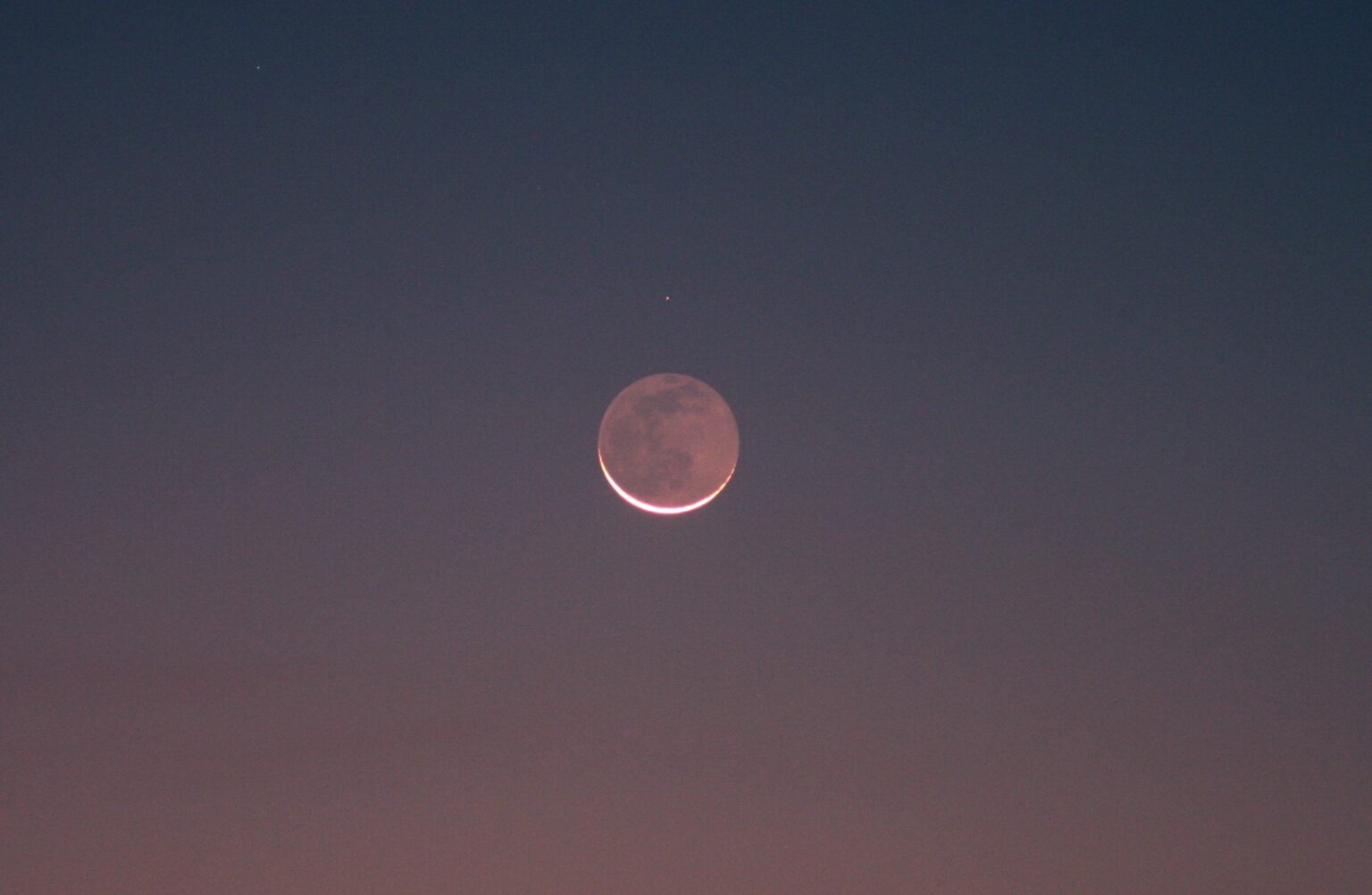Last week, Ukrainian news portals suddenly rushed to notify all their readers about the incredibly rare “Da Vinci glow“, which supposedly can be seen on the evening of May 21. Some sites even reported that it was visible only “once every 10 years”. Of course, one could be happy for such a desire to popularize astronomy … if, in pursuit of the number of views, journalists did not engage in frank distortions.
The primary source of the “sensation”, apparently, should be considered a reporter Stuart Clark from The Guardian newspaper. In his article dated May 15, he recalled that soon the Moon would enter the new moon phase, and a few days after that our natural moon would be visible in the phase of a thin crescent. The Earth, on the contrary, will be visible from the Moon as an almost complete disk, and the sunlight reflected from it should illuminate the lunar surface quite intensively — therefore we will see it as a dim ash disk embedded in a bright crescent, on which the sun’s rays directly fall. This phenomenon was observed by the ancient Greeks, but only the famous Italian artist and inventor Leonardo da Vinci could explain it in the XVI century. Clark’s article did not say that this phenomenon was particularly rare — it was just mentioned that on May 21 it would be most convenient to observe it.
Although this is not entirely true. The Moon moves along the celestial sphere, not deviating much from the ecliptic — the conventional line along which the annual movement of the center of the solar disk occurs. In our latitudes, at different times of the year, the ecliptic in the evenings is located relative to the horizon in different ways: in spring, when the “high” zodiac constellations Taurus and Gemini culminate in the evening, it “steeply climbs up”, and it is easy to see a thin crescent moon when its age does not reach two days. The greatest inclination of the ecliptic will be at the time of the setting of the vernal equinox, that is, it is best to observe a very young Moon in March. Already in April, the conditions for this will be a little worse, in May — even worse… But the conditions of its visibility in the morning sky are gradually improving. Yes, the “Da Vinci glow” can also be observed in the case of a very old Moon, when its crescent becomes quite thin. It’s just that you need to wake up at dawn. There is not a word about this in Clark’s article, and the Ukrainian journalists who undertook to reprint it also did not remember such a trifle.

On spring evenings, the moon in the same phase in our latitudes is visible much higher above the horizon than in autumn. Therefore, March and April are the most favorable time for observing this phenomenon.
It also does not mention that in tropical latitudes, the “Da Vinci glow” in the presence of clear sky is visible practically monthly in almost invariably good conditions. But the funniest thing was that some sites that wrote about the “rare phenomenon” illustrated it with last year’s pictures of a thin crescent moon, taken not 10 years ago.
So what can we note from the above? Firstly, those who wanted to see a “rare astronomical phenomenon” on May 21, but for some reason could not — do not be upset, you can see it on the 22nd or 23rd. These days, the phase of the Moon will not be very large yet, and the Earth will illuminate it quite intensively. And you can wait until June 20 or 21 — these days the “Da Vinci glow” will be seen not much worse than on May 21-22. Then, however, the conditions of its evening visibility will worsen, but on September 13-14 or October 12-14, you can try to “catch” it in the morning sky. The glow is perfectly visible to the naked eye or in astronomical instruments with not very large magnification, which will allow you to see details in it — lunar seas and continents.

Such observations have no great scientific value, although an assessment of the brightness and duration of the visibility of the glow can tell about the density of the cloud cover over the hemisphere of the Earth facing the Moon. Since 2004, some ground-based observatories and the Hubble Space Telescope have periodically carried out its spectral studies to test methods for detecting biomarkers — “signatures” of vital molecules like oxygen or amino acids. The results of these studies are going to be used to search for life on exoplanets.
Interestingly, from the point of view of the supporters of the “flat Earth theory”, it is simply impossible to explain this phenomenon. According to their ideas, when the Moon is low above the horizon, our planet should be turned to it with an edge.…
Follow us on Twitter to get the most interesting space news in time
https://twitter.com/ust_magazine

